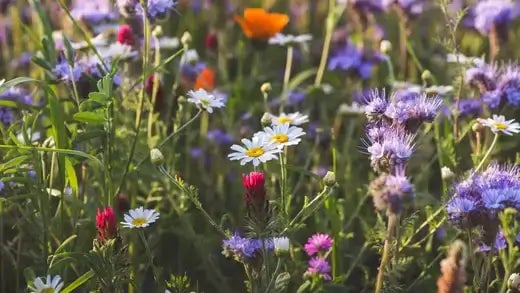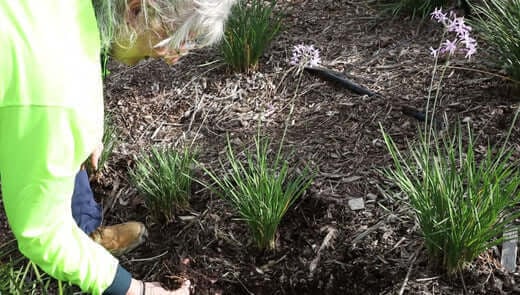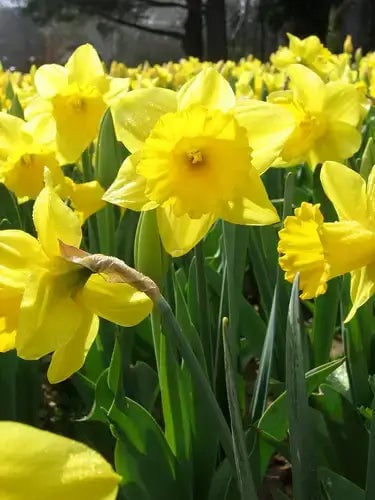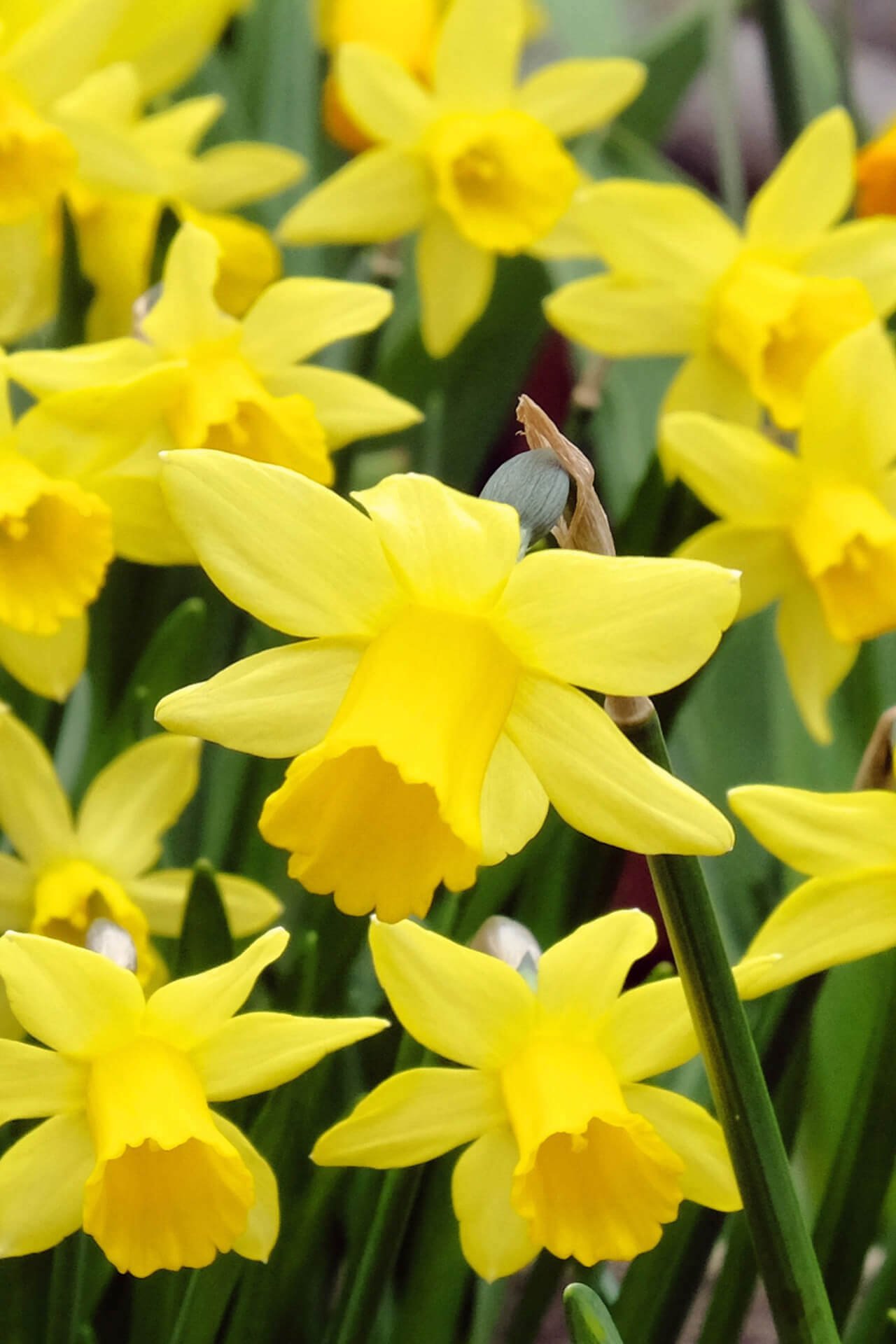Healing Potential of Daffodils
Nature has always been a treasure trove of medicinal wonders, offering many plants with therapeutic properties. Among these, the humble daffodil (Narcissus) is a remarkable example of a flowering plant with potential health benefits. Often associated with beauty and the arrival of spring, daffodils possess a range of compounds that hold promise in traditional and modern medicine. This article delves into the various medicinal aspects of daffodils, from historical uses to contemporary research, shedding light on this plant's potential for human well-being.
Daffodils in Historical Uses and Folklore
Daffodils have held a special place in human culture for centuries, often symbolizing renewal, hope, and resilience. However, their significance extends beyond aesthetics. Throughout history, different cultures have harnessed the medicinal properties of daffodils for various purposes.
In traditional Chinese medicine, daffodil bulbs were used to treat bronchitis, congestion, and respiratory issues. The bulb extract was believed to have expectorant and anti-inflammatory properties, making it valuable in alleviating respiratory discomfort.
In European folk medicine, daffodils were sometimes applied externally to wounds and sores due to their antibacterial and wound-healing properties. However, it's important to note that improper use could lead to skin irritation and other adverse effects, highlighting the need for cautious application.
Phytochemical Composition of Daffodils
The healing potential of daffodils lies in their complex chemical makeup. These flowers contain a diverse range of bioactive compounds, some of which have shown promising medicinal properties. Alkaloids, including lycorine and galantamine, are among the most studied compounds found in daffodils:
Galantamine
One of the most notable compounds in daffodils is galantamine. This alkaloid has garnered significant attention due to its potential in treating neurological disorders, particularly Alzheimer's. Galanthamine acts as an acetylcholinesterase inhibitor, which helps maintain higher levels of the neurotransmitter acetylcholine.
It is crucial because Alzheimer's disease is characterized by a decline in acetylcholine levels, leading to cognitive impairment. Research has shown that galanthamine can improve cognitive function and alleviate some symptoms of Alzheimer's disease, such as memory deficits and cognitive decline.
Lycorine
Lycorine is another alkaloid found in daffodils that has attracted interest for its potential as an anticancer agent. Preliminary studies have shown that lycorine exhibits cytotoxic effects on various cancer cell lines. It interferes with the cell cycle, induces apoptosis (programmed cell death), and inhibits the growth and spread of cancer cells. However, like galanthamine, more research is required to determine its clinical efficacy and safe usage.
Modern Research and Potential Applications of Daffodils
While daffodils have been utilized in traditional medicine for generations, modern science is unravelling their potential more systematically. Contemporary research focuses on harnessing the active compounds of daffodils for various health applications:
- Alzheimer's Disease: Galanthamine's role as an acetylcholinesterase inhibitor has prompted investigations into its potential for treating Alzheimer's disease. Some medications on the market already use galanthamine as an active ingredient to manage cognitive decline in Alzheimer's patients. However, researchers are working to understand its mechanism of action better and refine its use for more effective treatment.
- Cancer Treatment: Lycorine's anticancer properties have generated interest in its potential as an adjunct therapy for various types of cancer. Researchers are exploring how lycorine could be incorporated into existing cancer treatment regimens to enhance their efficacy. It's important to note that cancer treatment is complex, and any potential application of lycorine must undergo rigorous testing and clinical trials.
- Antimicrobial Properties: Daffodils also show promise in antimicrobial activity. Certain compounds found in daffodils have demonstrated antibacterial effects against both gram-positive and gram-negative bacteria. It could pave the way for developing new antibacterial agents to combat drug-resistant bacteria, a growing concern in modern medicine.
Although daffodils' medicinal prospects are promising, there are some challenges along the way:
Toxicity: Daffodils contain compounds that can be toxic if ingested in significant quantities. Careful extraction and dosage considerations are essential to avoid adverse effects.
Regulation: Developing and bringing new medicinal compounds to market involves rigorous testing and regulatory approval. This process can be lengthy and resource-intensive.
Clinical Trials: For compounds like galanthamine and lycorine to become mainstream treatments, extensive clinical trials are required to establish their safety and efficacy.
Sustainability: Harvesting daffodils for medicinal purposes could have environmental implications if not managed sustainably. Conservation efforts and responsible cultivation practices are vital.
The daffodil holds a hidden treasure of potential healing properties. From traditional uses rooted in folklore to modern research illuminating its bioactive compounds, daffodils offer a promising avenue for medical advancements.
Whether it's in Alzheimer's treatment, cancer therapy, or antimicrobial solutions, the journey to harness the power of daffodils requires careful exploration, scientific rigour, and ethical considerations. The daffodil's significance may extend beyond its role as a herald of spring, blooming into a symbol of hope and health for future generations.
Daffodils, with their vibrant hues and graceful demeanour, have long been a symbol of beauty and inspiration in gardens, art, and literature across the globe. These enchanting flowers, also known as Narcissus or jonquils, possess a unique charm that transcends cultural boundaries and captivates hearts.
In gardens, daffodils stand as heralds of spring, emerging from the thawing earth to announce the end of winter's slumber. Their cheerful yellow and white petals, often accompanied by a delicate fragrance, infuse landscapes with a sense of renewal and vitality. Gardeners eagerly await their arrival, planting bulbs in the fall with the promise of a vibrant springtime display.
The daffodil's elegance has entranced artists throughout history. Painters, from the Dutch Masters to contemporary artists, have captured their allure on canvas, showcasing their intricate details and radiant colors. Daffodils have also found their place in other art forms, such as photography and sculpture, where their timeless beauty is preserved for generations. The daffodil's image has even graced numerous postage stamps, further solidifying its status as a beloved cultural symbol.
In conclusion, daffodils continue to enchant and inspire gardens, art, and literature worldwide. Their timeless allure serves as a reminder of nature's boundless beauty and the human spirit's capacity for creativity and introspection. Whether adorning a garden bed, a canvas, or a page, daffodils stand as a testament to the enduring power of nature to captivate and uplift the human soul.
Harnessing the Healing Potential of Daffodils at Home: Safe Approaches
Worldwide appreciation exists for daffodils because of their vibrant trumpet-shaped flowers, representing spring's renewal and arrival. Daffodils have been part of traditional and folk medicinal practices for centuries beyond their role as decorative plants. However, it is essential to handle them with care: Daffodils possess potent alkaloids, which become toxic through improper ingestion or excessive application. Gaining therapeutic benefits from daffodils at home requires careful and well-informed practices prioritizing safety.
Any internal consumption of daffodil extracts and teas requires extreme caution and should only be undertaken with the supervision of a medical expert. The toxic properties of this plant produce effects such as abdominal discomfort along with nausea and vomiting, among other adverse reactions. Daffodil bulbs and leaves were traditional herbal elements used by healers to create remedies for treating respiratory issues and muscular discomfort. Scientists today study daffodil alkaloids for their possible benefits in treating specific medical conditions. Due to limited safety information and the experimental status of daffodil discoveries, internal use of potent daffodil products should only follow healthcare provider guidance.
People can safely examine daffodils' aromatic qualities and soothing effects by applying them externally in mild forms. People sometimes produce delicate oils infused with daffodils for external application. Begin this process at home by collecting a few pesticide-free fresh daffodil petals and laying them out to wilt on clean paper towels for several hours. Put the wilted petals into a jar with carrier oil, then seal the jar. Keep the mixture at room temperature in a dry location for the next 14 days, and shake it gently daily. After straining the mixture, you can deploy the daffodil-infused oil as a massage oil for relaxation in small amounts. Before applying this product broadly, a patch test on a small skin area is necessary to detect potential irritation or allergic responses.
Floral sachets and potpourri are gentle methods for experiencing the daffodil's soothing fragrance. Combine dried petals with calming herbs such as lavender or chamomile. Stash the mixture inside cotton or muslin sachets and position them in drawers, below pillows, or close to restful spaces. The daffodil's fragrance may not be as powerful as other herbs, but it offers a gentle floral essence that aids in crafting a peaceful setting.
Those who enjoy crafting homemade soaps or lotions should consider adding dried daffodil petals to their oils when making their recipe. Again, be judicious in the quantity used. Excessive use of daffodil material can result in skin irritation because the plant's alkaloids become problematic at high concentrations.
Though daffodils have been historically valued for medicinal benefits, they require careful handling because of their poisonous nature. Home applications of daffodils should only involve mild external uses such as gentle massage oil infusions, homemade bath products, and aromatic sachets. Perform a sensitivity patch test before use, and remember to use only tiny portions of pesticide-free petals when seeking professional medical advice if you are unsure. By respectfully treating daffodils, you can experience their delicate beauty and reduce potential dangers.
Read more

Tuesday, March 29 Do you feel frustrated because the flowers from your yard won't look as good when you arrange them as they do at the florists? An excellent technique is to cut flowers in two siz...

Mulching, if done correctly, can have many benefits for the garden. It is not a very technical thing, and you can easily apply mulch in your garden by yourself. It is essential to follow the co...



